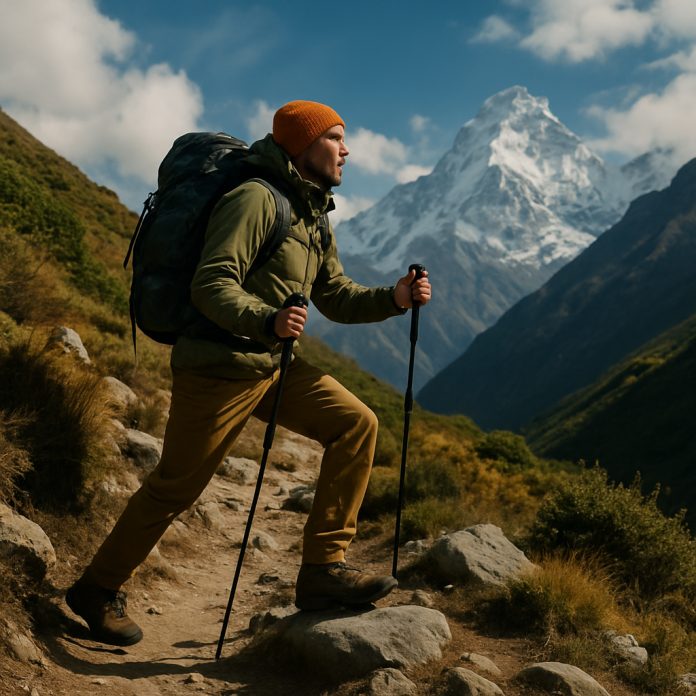So, you’ve circled the dates, booked your flights, maybe even snagged that new pair of trekking boots. But now the big question looms: How exactly do you train for Everest Base Camp?
The internet is full of cookie-cutter plans—“run three times a week,” “do squats,” “buy a stairmaster.” But let’s face it—this isn’t your neighborhood 5K. It’s high-altitude trekking, lung-burning ascents, and 10+ days of putting one foot in front of the other on the roof of the world. So, we turned to those who’ve been there: real trekkers who’ve walked the walk (sometimes in -20°C snowstorms) and asked them what actually worked for them.
Here’s the no-fluff, trail-tested advice that’ll get you from couch to Kala Patthar.
Start With This: EBC Is Not Everest. But It’s No Joke Either.
Everest Base Camp sits at 5,364m (17,598 ft)—higher than any mountain in most countries. You won’t need ropes or crampons, but don’t underestimate the slow burn of altitude. Most trekkers hike 5–7 hours a day for nearly two weeks, with two key acclimatization stops at Namche Bazaar and Dingboche.
Here’s what that means: You don’t need to be a marathoner. But you absolutely need endurance, strong legs, and a resilient mind.
The Top 6 Physical Training Tips (Straight from the Trail)
1. Stairs. Real Stairs. Lots of Them.
If you’re going to do one thing, do this. Stair climbing simulates the constant uphill grind of EBC better than anything else.
“I did 45 mins every other day on a stairmaster for a couple months. That was gold.” – EBC trekker, March 2024
“If you’ve got hills nearby, just climb. Rinse, repeat.” – Solo hiker, Namche-Bazaar veteran
Bonus tip: Don’t just go up. Descending is where people blow their knees. Practice downhills too.
2. Train With a Weighted Daypack
Your pack might not seem heavy at first, but 6 hours in, that water bottle turns into a dumbbell.
“I did weekend hikes with a 15kg pack in the hills. It made a huge difference above Dingboche.” – Trekker from New Zealand
3. Weekly Long Hikes
Flat or hilly, doesn’t matter. Your legs need to get used to moving for hours.
“Every weekend I hiked 5–7 hours. That kind of endurance training made the trail feel doable.”
4. Cardio That Doesn’t Bore You to Death
Running, HIIT cycling, swimming, trail jogging—whatever gets your heart pumping.
“I ran 3x a week, built up to 45 minutes. In the last month, I switched to hikes instead.”
“Cycling and singing while running helped build my lungs and focus on breathing.” – Not kidding, that one’s legit.
5. Trek at Altitude If You Can
Nothing prepares you for altitude… like altitude. If you live above 2,000m or can visit a high-altitude area, take advantage of it.
“Hiked at 3,000m in Utah and then Peru. My body adjusted faster on the real trek.”
6. Strengthen Ankles and Knees
Rough trails mean unstable footing. Build stability with uneven terrain, stairs, or agility drills.
Don’t Forget Mental Training: It’s 70% in Your Head
The altitude plays with your mind as much as your lungs. One day you’re feeling strong, the next you’re dizzy at breakfast.
“Mental toughness is crucial. I trained for a month, ran an hour every morning and evening, but it was my mindset that pulled me through the toughest days.” – Rock climbing trainee from Kathmandu
“Take it slowly-lowly—as the Kilimanjaro guides say. Hike your own hike and don’t race.”
Final Prep Tips That Most People Forget
-
Break in your boots. No exceptions. Even if they feel “comfortable,” do at least 30 miles in them first.
-
Hydrate like it’s your job. Practice drinking 3–4L of water per day while training.
-
Use trekking poles while hiking. They save knees and improve balance.
-
Train for rest days too. Not physically, but emotionally. You’ll be forced to stop and acclimatize. Patience is part of the deal.
-
Pack snacks. Trail energy is real energy. Your body burns calories like a furnace above 4,000m.
Ready to Summit (Mentally, At Least)?
You don’t need to be a mountaineer, ultramarathoner, or CrossFit addict to trek to Everest Base Camp. But you do need a plan, some sweat equity, and a good dose of humility. Real trekkers have done it before you—with simple but consistent training.
Start today. One flight of stairs, one loaded backpack walk, one long hike this weekend. Before you know it, you’ll be standing at the foot of the world’s tallest mountain, smiling through your windburn.
See you on the trail.

